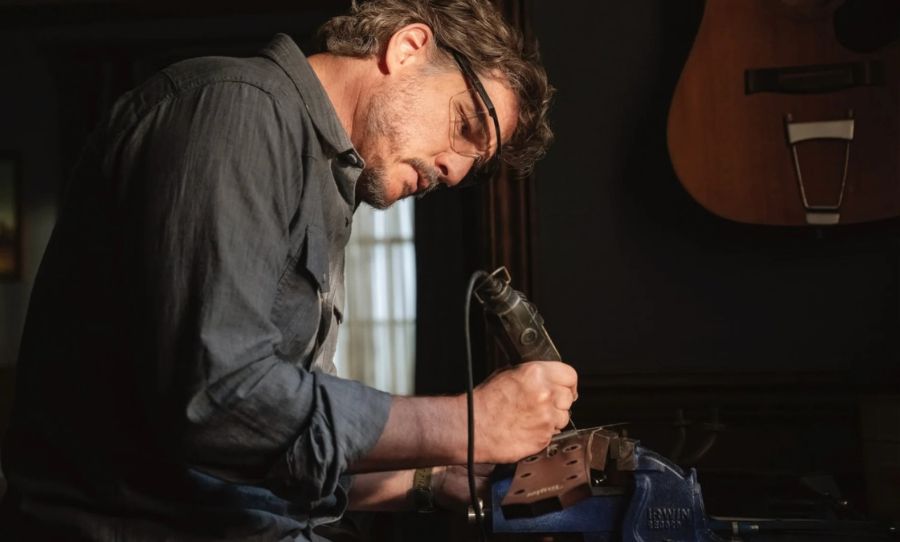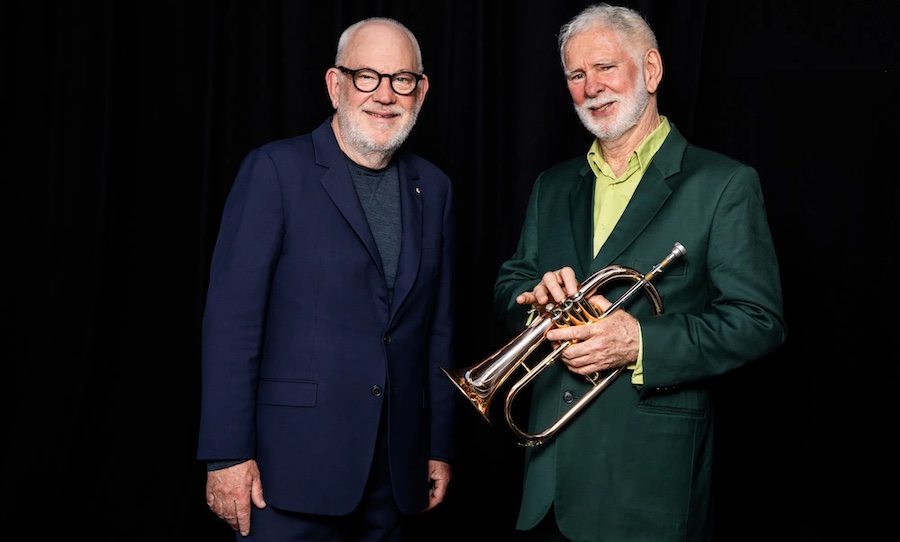Country icon Willie Nelson and Trigger – his broken-down acoustic guitar – have been together for five decades. It doesn’t look like they’ll be parting ways anytime soon.
The history of modern music is replete with significant partnerships, but the vision of Willie Nelson and his guitar, the infamous Trigger, is more recognisable than most. It’s been by his side for more than five decades and as you can imagine, it has quite a tale to tell.
Purchased in 1969, the nylon-string Martin N-20 acoustic that Nelson named Trigger after his hero’s horse marked the return of the country singer-songwriter to his Texas roots. He and his trusty steed have been together ever since.
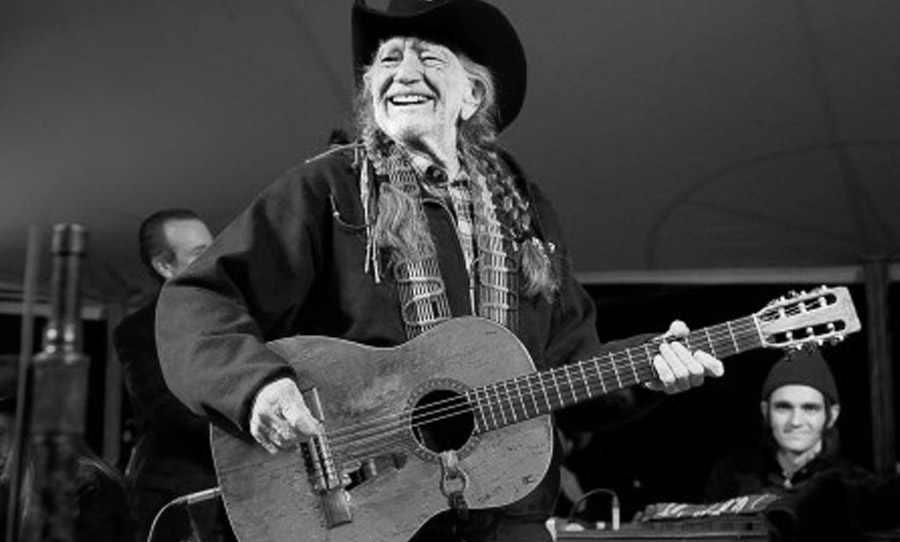
Love at First Sight
Before the star-crossed meeting with his most famous axe, Nelson had enjoyed some success on the country circuit. Finding his way out of his hometown in rural Texas, Nelson became a journeyman, taking up jobs in Washington State and back in Texas before trying his luck in the Mecca of the country scene: Nashville, Tennessee in the early 1960s.
After a show in Texas in 1969, a drunk punter accidentally stood on Nelson’s Baldwin nylon-string guitar. He sent it back home for repairs, but the luthier back in Nashville, Shot Jackson, deemed the guitar a write-off. He did, however, have another guitar on offer, a Martin N-20 classical guitar.
Nelson was still eager to keep the sound of his Baldwin’s Prismatone pickup, so he instructed Jackson to install it in the Martin. Trigger was born.
Turbulent Times
Despite the fact that this serendipitous partnership was just beginning, these were tough times for Nelson. Though he was a legitimate recording artist, sustained success was still elusive for him, which led to his disillusion and eventual retirement from music in the early 1970s.
Staring down the barrel of a second failed marriage, Nelson moved back to Texas, where he began to rebuild his career on his own terms. In this phase of his career, Trigger came into its own, with Django Reinhardt-influenced, jazz-inflected tones of the nylon string colouring albums like Shotgun Willie, Phases and Stages, Stardust and more. By the end of the ’70s, Willie Nelson and his sidekick were back on top.
Throughout the ’80s, Nelson made great artistic choices, yet financially, his state of affairs was rather precarious. He made a series of bad investments and racked up a tax bill totalling more than $30 million. The IRS seized many of his assets and naturally, Nelson was worried that Uncle Sam might also come after his world-famous guitar. He actually asked his daughter to hide his guitar, eventually bringing it to his house in Hawaii.
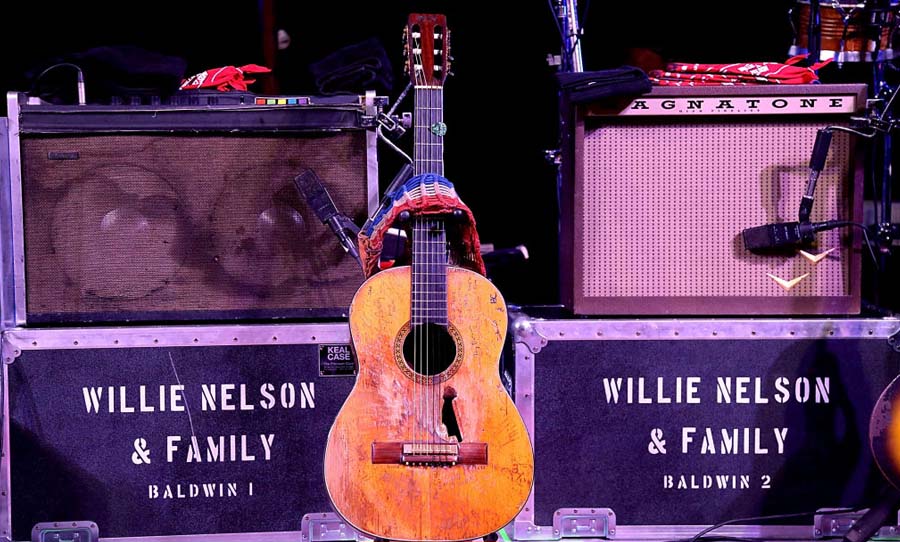
Beaten Up
At the beginning of Trigger’s existence, it was a beautiful guitar indeed. Made from traditional classical guitar materials, it was topped with golden Sitka spruce, with Brazilian rosewood sides and back, mahogany neck and ebony fretboard and bridge. This combination of classy tonewoods created a silky and mellow sound, perfect for classical guitar concerts.
But as we all know, Trigger was destined for a different stage.
In the July 2018 edition of Acoustic Guitar magazine, Adam Levy writes:
“It’s no secret that Nelson’s primary inspiration—on the guitar, at least—is the late Gypsy-jazz luminary Django Reinhardt. Echoes of Reinhardt’s sinuous melody lines can frequently be heard in Nelson’s guitar solos…”
To execute this style, Nelson couldn’t approach this specific guitar with the technique it was built for. He needed to use the pick. As anyone familiar with the guitar knows, that pickguard isn’t there just to look pretty. It protects the guitar from constantly being slashed into with a pick. Bereft of said pickguard and a veteran of more than 10,000 shows, over time, Trigger developed its most distinguishing feature – the massive hole adjacent to the bridge.
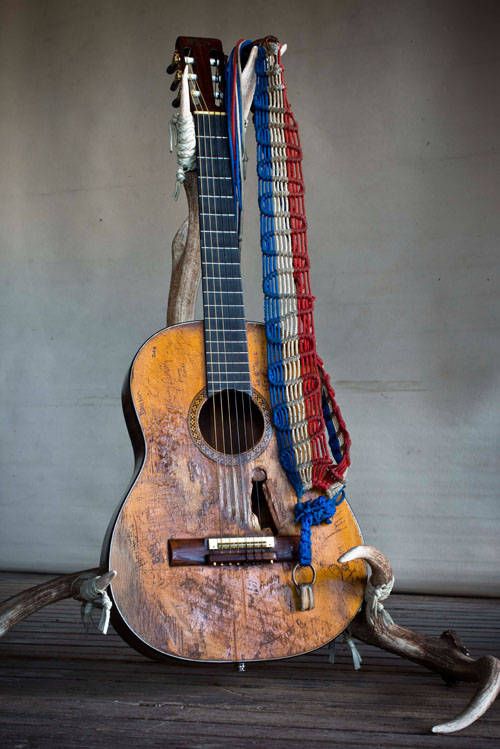
TLC
You might suspect that ol’ Trigger was a victim of a criminal level of neglect, but nothing could be further from the truth. Austin-based luthier Mark Erlewine has been entrusted keeping the guitar in working order, which, given the instrument’s fragility, is some task. As Michael Hall explained in his Texas Monthly article:
“He placed a couple of short mahogany braces under the soundboard to shore it up. Willie played so hard, and his fingers attacked such a wide area—from the bridge to the soundhole, above it and below it to the edges of the guitar—that Erlewine had to clean a lot of wood.”
The soundboard also bears some pretty significant autographs. The likes of Johnny Cash, Kris Kristofferson and Roger Miller have laid their monikiers on this fabled piece of spruce, as well as countless crew over the years. Some etched in for eternity, others washed away by the rigours of the road.
Throughout the many travails of Shotgun Willie, Trigger has been a steadfast companion. He gave it that name because he wanted to emulate his boyhood idol, the cowboy entertainer Roy Rogers, who called his faithful Palamino Trigger. And just like the horse, the guitar grew old alongside its owner, continuing to exhibit all the signs of a life well-lived.
